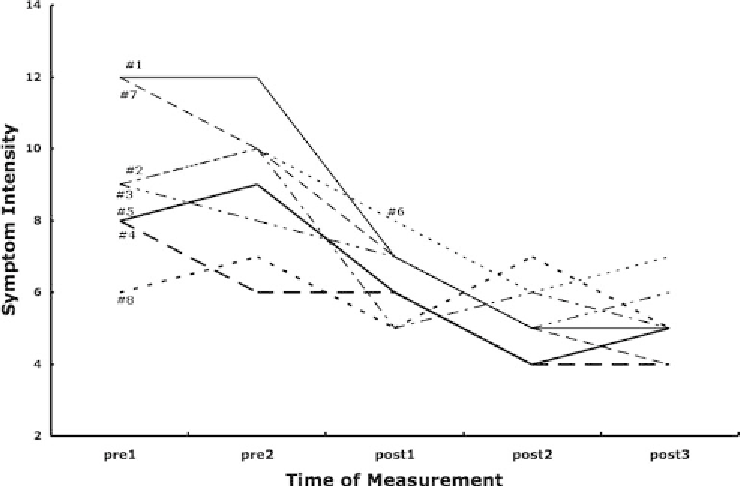Information Technology Reference
In-Depth Information
With only one independent variable in the design, there is only one
F
ratio in the omnibus analysis that interests us - the
F
ratio associated with
the independent variable. This is a within-subjects variable and therefore
is a component of the within-subjects variance. In the numerical example
we use here, this
F
ratio will be statistically significant, indicating that the
drug has significantly reduced symptom intensity.
10.7.2 MULTIPLE COMPARISONS
With a statistically significant effect, a post-ANOVA test is needed to
determine which means differ significantly from which others. Unlike a
between-subjects design, we cannot perform post hoc tests in SPSS - this
software is programmed such that the
Post Hoc
window is available only
for between-subjects independent variables. Instead, we can perform the
same type of comparisons (i.e., paired comparisons) that are used in the
simple effects analyses that we have described in Chapter 7. SPSS and SAS
make this quite easy, as you will see when we describe how to perform the
ANOVA and multiple comparisons procedures in SPSS and SAS.
10.8 THE ERROR TERM IN A ONE-WAYWITHIN-SUBJECTS DESIGN
The error term for a one-way within-subjects design must be under-
stood from a different perspective than we understand the error term in
a between-subjects design. We can illustrate the conception of within-
subjectserrorinFigure10.2,wherewehavegraphedtheindividualdata
Figure 10.2
Pattern of symptom intensity over the repeated measurements for each
participant.

